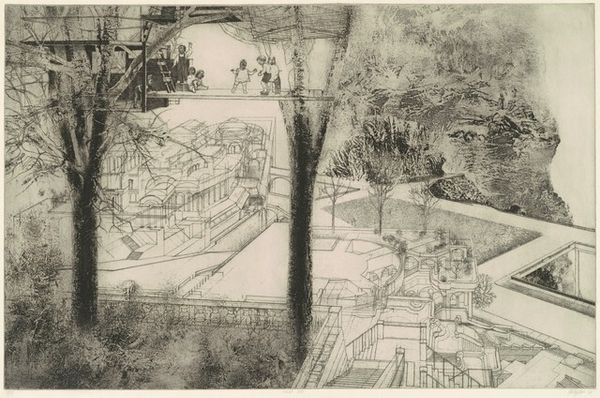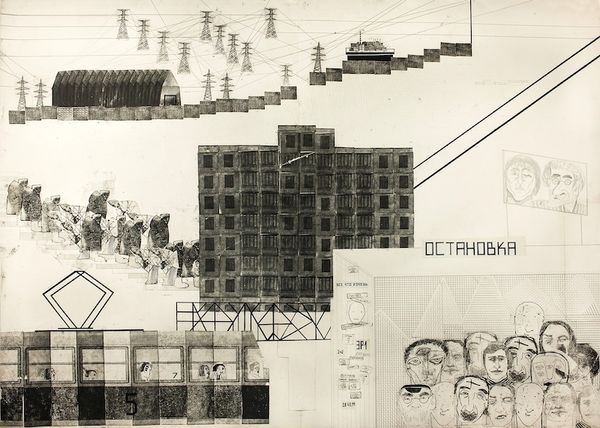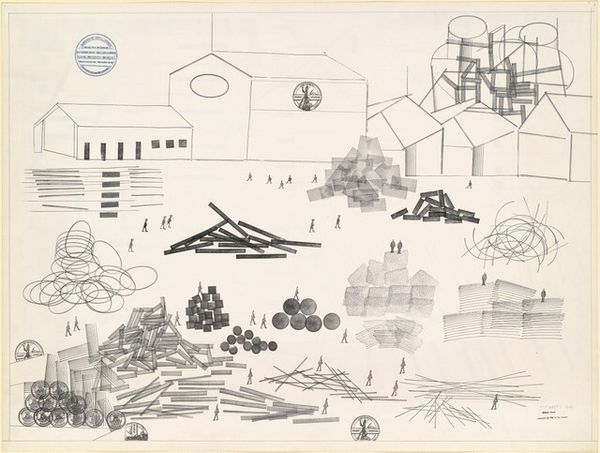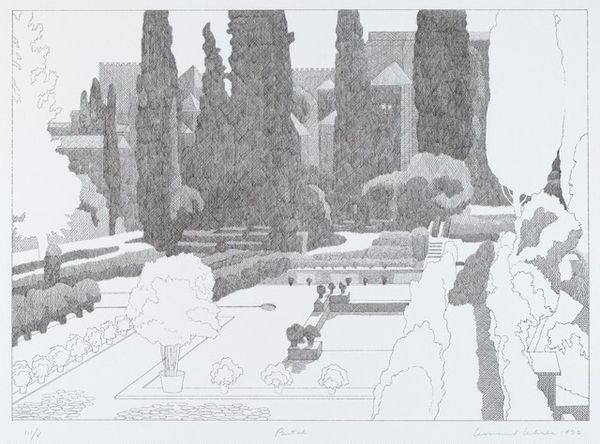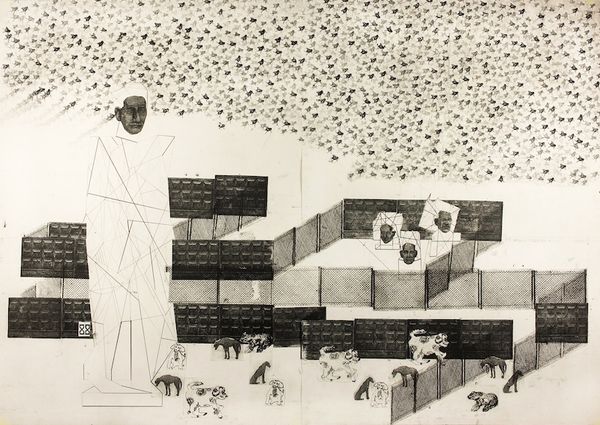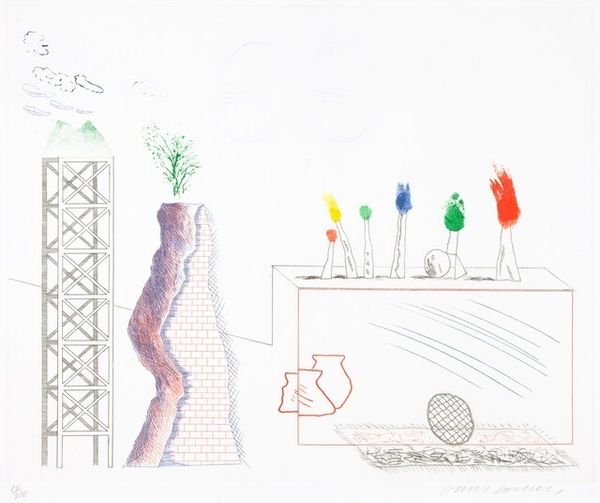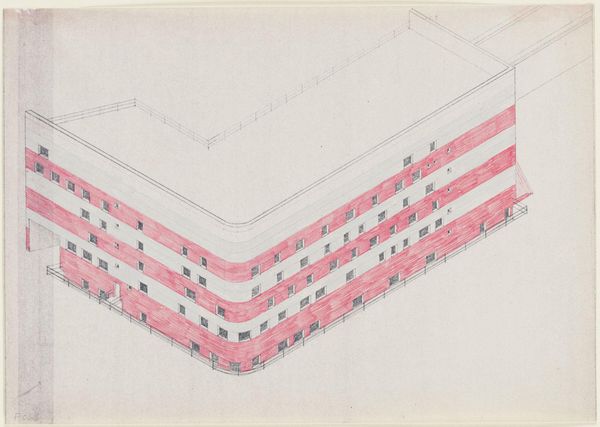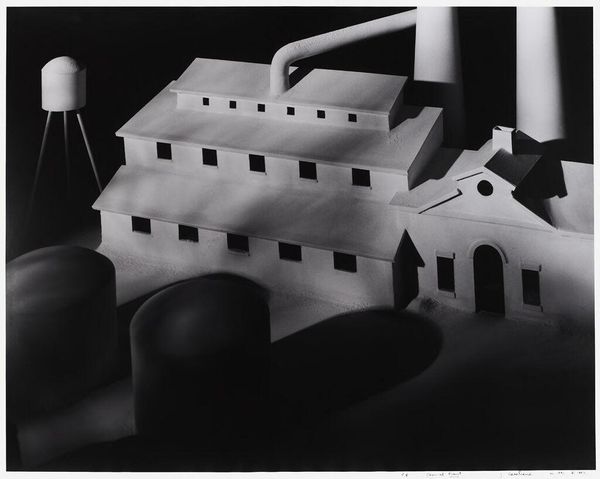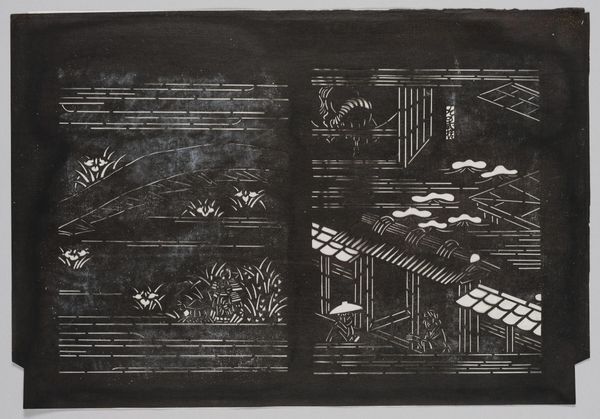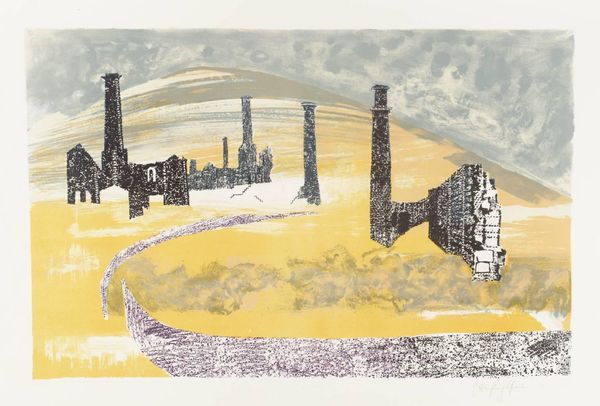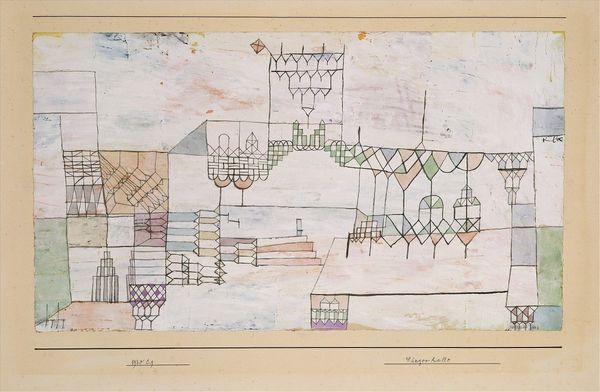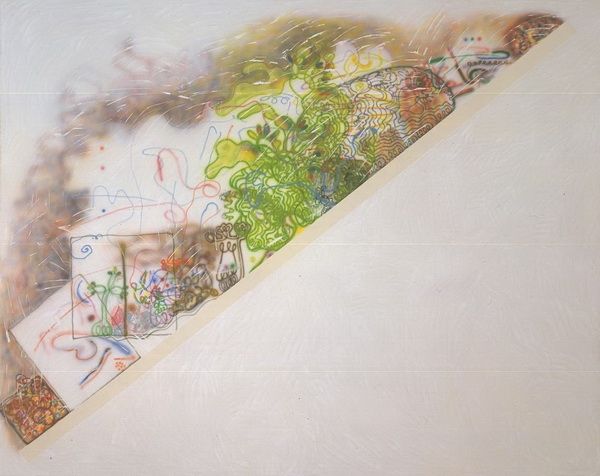
Dimensions: unconfirmed (overall): 3000 x 4500 mm
Copyright: © Paul Noble | CC-BY-NC-ND 4.0 DEED, Photo: Tate
Editor: This is Paul Noble's "Lidonob," a massive graphite drawing. The detail is incredible, but the landscape feels unsettling, almost dystopian. What's your take on it? Curator: I see a powerful critique of urban planning and social control. The meticulously rendered geometric forms evoke both utopian ideals and the cold reality of institutional architecture. Consider how the lack of organic life and the overwhelming scale might speak to feelings of alienation and powerlessness within modern society. Editor: So, you're saying it's not just a cool drawing, but a commentary on society? Curator: Precisely! Noble is inviting us to question the structures that shape our lives and consider who benefits from these constructed environments. What feelings does this work evoke in you? Editor: It does make me think about the impact of architecture on our mental state. Thanks for that perspective! Curator: My pleasure! Art is a tool to challenge our understanding of the world around us.
Comments
Join the conversation
Join millions of artists and users on Artera today and experience the ultimate creative platform.
tate 6 months ago
⋮
LidoNob is a large pencil drawing on paper, measuring more than four metres across. It consists of four panels which abut or overlap one another to present a continuous image. It presents a view of the swimming pool of the fictitious town of Nobson Newtown. Built between the city slums and the Chemical and Light Industry Plant (C.L.I.P.O.N.), the lido is framed by a zigzagging wall of geometric protrusions resembling rock formations. In the centre of the image, a diving platform located above the swimming pool spells out the title of the work. To its left, another diving platform of differing heights resembles a thin scaffold construction with an impossible staircase of ascending and descending loops. On the right hand side, there is a series of modular rounded forms, and further to the right there is an underground station with the logo of Nobson’s transport company (Nobgo Travel) on each side. In LidoNob, the objects are arranged on a spatial plane using ‘cavalier’ or oblique projection, wherein the distance between fore, mid and background is abolished, and everything depicted is equally close to the viewer, cancelling out any sense of hierarchy between the different parts of the composition. The origins of this lie in military cartography, and it has the effect of inviting the viewer to take in the entire design at once. Noble’s use of cavalier projection flaunts the fictional reality of the town he depicts, which is further undermined by the conspicuous lack of any human presence.
